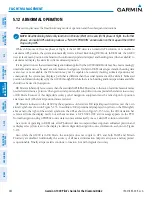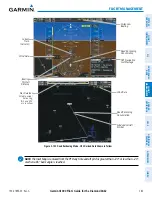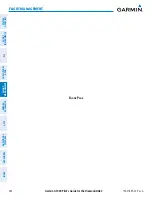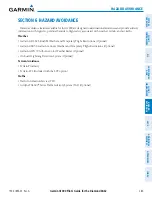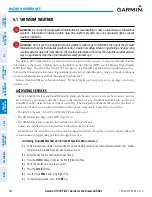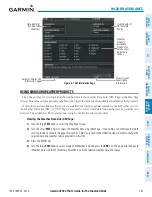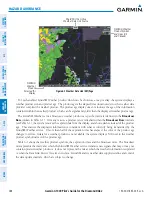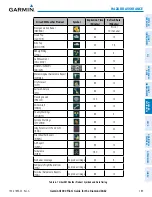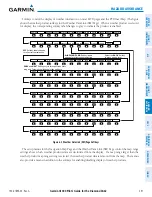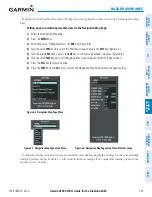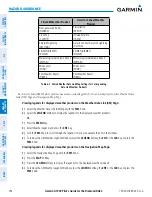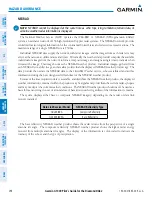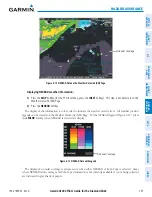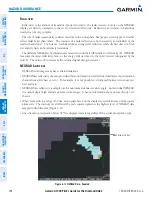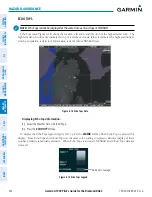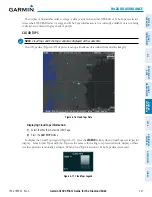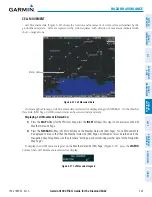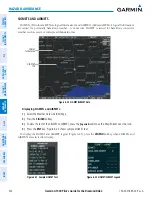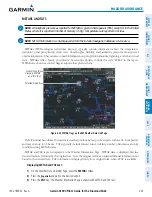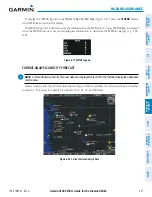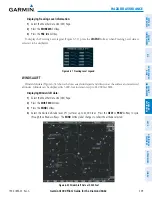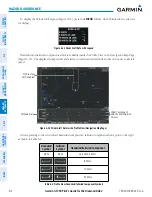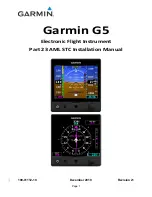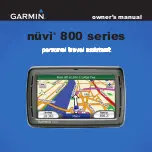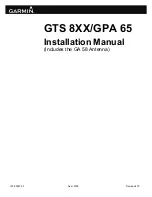
Garmin G1000 Pilot’s Guide for the Diamond DA62
190-00-01895-00 Rev. A
296
HAZARD AVOIDANCE
SY
STEM
O
VER
VIEW
FLIGHT
INSTRUMENTS
EIS
AUDIO P
ANEL
& CNS
FLIGHT
MANA
GEMENT
HAZARD
AV
OID
ANCE
AFCS
ADDITIONAL FEA
TURES
APPENDICES
INDEX
NEXRAD
NOTE:
NEXRAD cannot be displayed at the same time as echo tops, icing, turbulence, terrain data, or
airborne weather radar information is displayed.
The National Weather Service (NWS) operates the WSR-88D, or NEXRAD (NEXt-generation RADar)
system, an extensive network of 156 high-resolution Doppler radar systems. The NEXRAD network provides
centralized meteorological information for the continental United States and selected overseas locations. The
maximum range of a single NEXRAD site is 250 nm.
Individual NEXRAD sites supply the network with radar images, and the images from each radar site may
arrive at the network at different rates and times. Periodically, the weather data provider compiles the available
individual site images from the network to form a composite image, and assigns a single time to indicate when
it created the image. This image becomes the NEXRAD weather product. Individual images--gathered from
each NEXRAD site--differ in age, and are always older than the displayed NEXRAD weather product age. The
data provider then sends the NEXRAD data to the SiriusXM Weather service, whose satellites transmit this
information during the next designated refresh time for the NEXRAD weather product.
Because of the time required to detect, assemble, and distribute the NEXRAD weather product, the displayed
weather information contained within the product may be significantly older than the current radar synopsis
and may not depict the current weather conditions. The NEXRAD weather product should never be used as a
basis for maneuvering in, near, or around areas of hazardous weather regardless of the information it contains.
The system displays either base or composite NEXRAD imagery, depending on the model of data link
receiver installed.
Data Link Receiver Model
NEXRAD Reflectivity Type
GDL 69/69A
Composite Reflectivity
GDL 69E/69EA
Base Reflectivity
The base reflectivity NEXRAD weather product shows the radar returns from the perspective of a single
antenna tilt angle. The composite reflectivity NEXRAD weather product shows the
highest
radar energy
received from multiple antenna tilt angles. The display of the information is color-coded to indicate the
intensity of the echoes and the type of precipitation.

